Focused on learning: How #EdTech is Keeping Students on Task

According to Cambridge Assessment the average age of a UK teacher is 39.
Born in 1980, some eleven years before Tim Berners-Lee set the first webpage live on 6th August 1991 most teachers grew up in a pre-digital era therefore belonging to ‘Generation X’ having lived through the journey from a pre to post internet age.
Most students entering college this year have no concept of this journey being part of ‘Generation Z’, born into the internet age and often regarding wifi in the same way earlier generations regarded access to hot water.
Certainly in my family the fastest way to secure the attention of the children is just to unplug the router.
Generation Z are a different type of learner. Entrepreneurial, networked and collaborative with a preference for edgy and bold brands and immersed in technology.
According to research by MediaKix 98% of Generation Z owns a relatively advanced smartphone, will spend several hours a day on it and perhaps most significantly have an attention span of less than ten seconds unless they are engaged.
As with anything relatively new the research about the positive and negative ways that technology is shaping our behaviours is and will remain emergent but there are early signs that we need to rethink the processes we use to support learning.
A world immersed in technology is also a world of infinite distractions and unless we implement effective teaching and learning strategies to address this, tools that were supposed to help to increase productivity and positive outcomes could actually do the opposite. In this sense the ability to focus on the task at hand is a key part of workforce readiness in the digital age.
The contention of this article is that the ability to focus is one of the most significant challenges facing educators in the digital age, and it isn’t just the students. The good news is that if we are aware of this and combine it with a better understanding of the evolving way we learn we can transform learning outcomes.
The tools now available to support us to stay focused on the task at hand and achieve more than ever before are unprecedented but the benefits can only be realised if we take the time to develop workforce development strategies that enable it.
Technology can be a powerful part of the solution in this context and works best when it’s implemented with people who have the skills and confidence to use it in a way that has impact. To enable that, people rather than technology must be central to any digital strategy.
This is how we learn
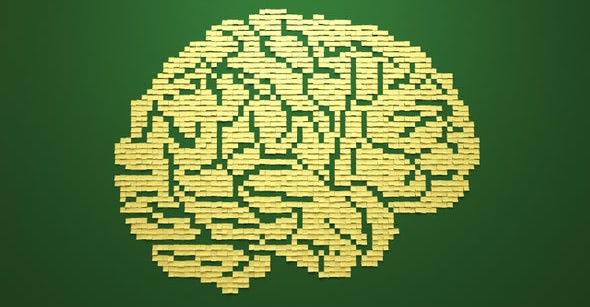
In a paper titled ‘What Brain Research Says About Paying Attention’ by Robert Sylwester and Joo-Yun Cho, the authors argue that teachers should “use imaginative teaching and management strategies to enhance the development of their students adaptable attention processes”.
Put simplistically this research reinforces the arguments put forward by the likes of Sir Ken Robinson among wider respected authorities on creativity and the diversity of learning preferences. The exciting potential in the digital age is how we can use technology to support these imaginative and creative approaches to engage the attention of Generation Z learners and keep it focused on learning.
It will require new mindsets and new thinking, and that isn’t easy, but as William Pollard once said “change is hard, but not changing is fatal”.
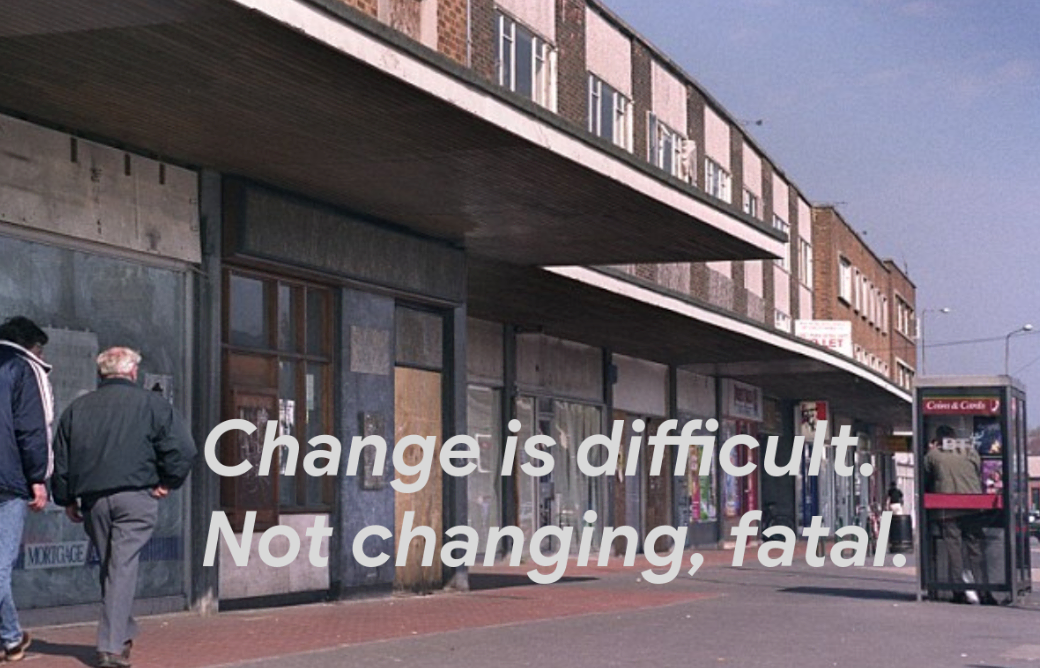
Sylvester and Cho argue that any effective attentional system must be able to quickly focus on the most important item in a complex environment, sustain attention on the core focus whilst monitoring related information and ignoring other stimuli, access memories that aren’t currently active but could be relevant and shift attention to new important and relevant information when it arrives. With all of this, technology can help, but only if we do things differently.
In their research Sylvester and Cho also highlight that how the brain actually learns presents a curriculum dilemma. The system the brain uses to retain information has largely evolved as a mechanism to cope with sudden dramatic changes that signal danger largely as a means of keeping us alive.
However the kind of issues we now face both at a local level and as a global society are more subtle and about longer term survival rather than short term whether it’s climate change, population change, responsible economics or wider. In the classroom the characteristics of learners have also fundamentally changed yet in most cases the process of learning largely has not and this issue is leading to disengagement and learning outcomes that are very different to what could otherwise have been the case.
In the digital age innovation isn’t optional but recognising how difficult it can be to change is a key part of the journey. High street retail is perhaps one of the most visible examples of this. Many of the well known retail names of the high street are gone not because change was ‘done to them’ but because they failed to adapt to a changing world. It’s no different in education.
To enable learning organisations to avoid the same fate as the traditional high street a strategic workforce development programme is necessary to create a culture of continual learning, enabling everyone to achieve a baseline level of digital literacy to support people to adapt and evolve curriculum design and delivery. Expecting people to use technology in new ways to achieve new results cannot happen without it.
For educators it is necessary to think about how we reset the way we learn to both meet these challenges and to use the new tools at our disposal to create tailored and highly personalised learning that is aligned to the brains of the digital age.
VP and Country Director at Google Sabrina Geremia recently referred to the need for ‘continual learning’ as necessary to avoid ‘disruption anxiety’ and certainly when listening to educators about their most likely causes of stress and anxiety in the workplace, often it’s technology that is ranked highly and this is typically because the technology is not aligned to learning combined with a lack of adequate training and support.
This matters because there is emerging research that is suggesting that by 2030 we will need to spend a third of our time learning to remain productive.
The pace of change is accelerating… Right now change is as slow as it will ever be
The scale of the challenge should not be underestimated. According to the Science and Technology Committee in the ‘Digital Skills Crisis’ report to the House of Commons some 12.6 million adults lack basic digital skills.
Colleges have a major role to play in addressing this challenge but have to start by getting their house in order first, and there is a long way to go. A College cannot make a case to deliver adult digital skills training unless it has a workforce that is digitally confident and competent. Those Colleges who have risen to this challenge are already reaping the benefits.
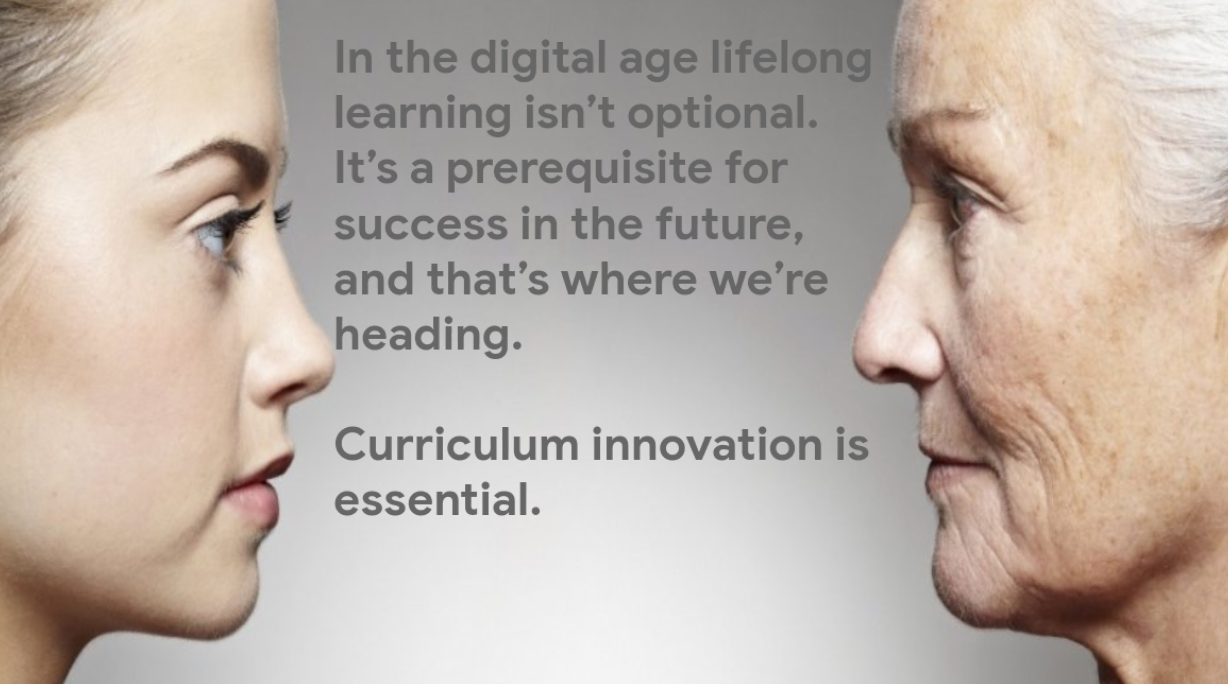
In the UK Colleges like Leeds City College and Coleg Cambria are examples of how taking a bold and innovative approach to strategic workforce development has enabled positive transformation, driven by people and enabled by impactful technology. Both of these organisations have been generous in sharing widely how and why they work in the way they do.
Most recently the impact of how Leeds City College has engaged and inspired learners to achieve more in literacy and numeracy using collaborative technologies has received much attention and deservedly so based on the data revealing the impact.
The message is clear. To engage learners in the digital age you have to put your people first as part of a digitally enabled workforce development programme and then provide them with the right tools to do the job.
Leeds City College has enabled Generation Z brains to engage in a way that’s aligned to how learners prefer to focus and through a technology platform that enables collaboration and the impact has been impressive.
As any educator knows, getting young people to focus on literacy or numeracy when they may have had several years of a bad experience in those areas is no small task so for Colleges struggling to transform outcomes in these areas (and that seems to be most), lessons learned from the Leeds City College journey show the way.
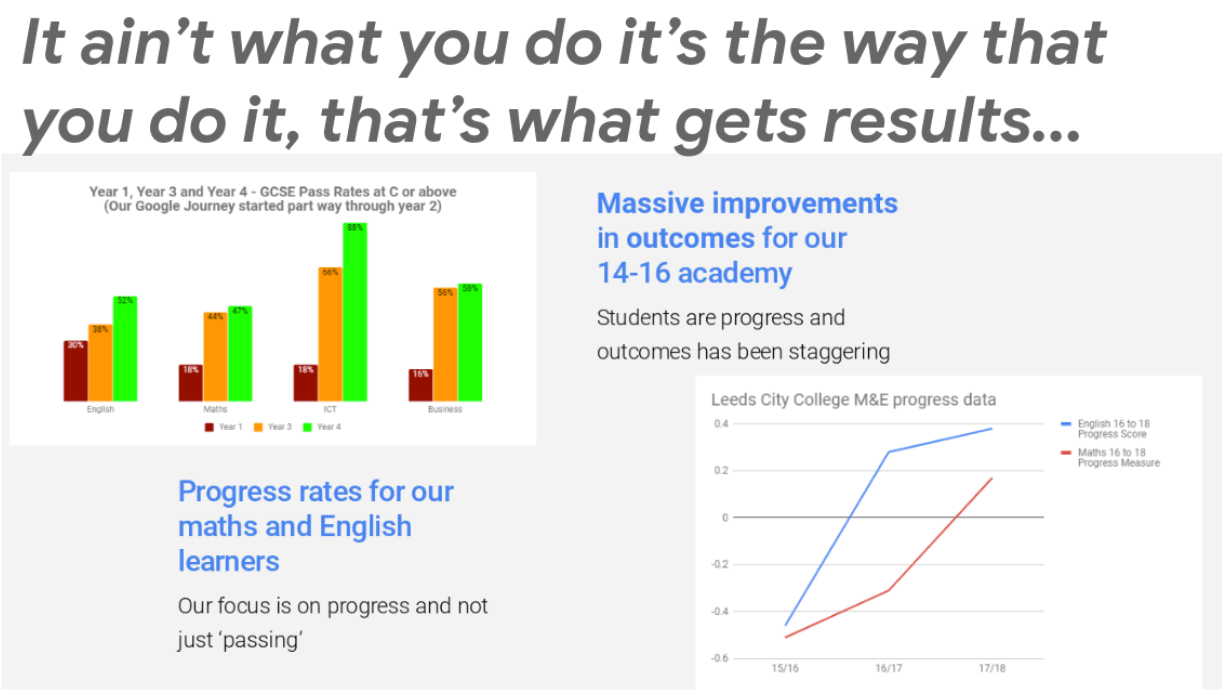
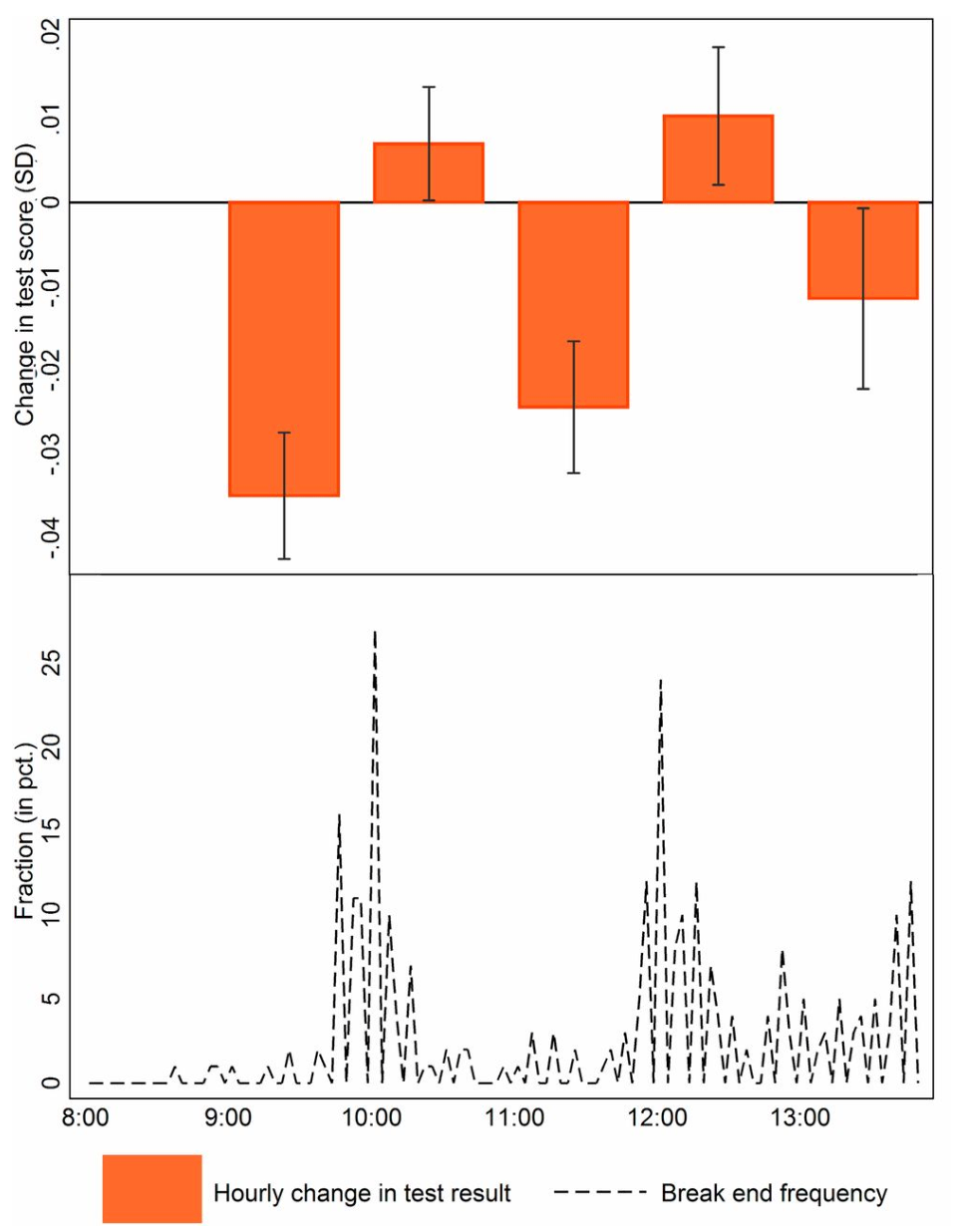
From the classroom to the collaboratory
In the digital age Generation Z learners have a bias towards bold, novel, visual stimuli and immediacy. The social media explosion is in part a symptom of this (not suggesting of course that much of this is educational). Contrast these preferences with highly structured and standardised learning methodologies in a very fixed environment and the ability of learners to focus on the task at hand is shifted into 3pm mode (the time of day we find it especially difficult to learn).
Part of the solution is how we reimagine education to be aligned to how we learn in the 21st century and that means using applications that provide highly personalised stimulating learning experiences. It also has implications for assessment strategies. Exams taken during the morning are more likely to yield higher results than those taken mid-afternoon. Our brains are at their peak cognitive performance in the morning.
Research undertaken by the Danish National Centre for Social Research and published in Proceedings of the National Academy of Sciences analysed more than 2 million test scores of students also recording the time of day of the assessment.
The findings are dramatic. For every hour after 8am that an exam was scheduled, the students scores declined on average by 1%.
Students already below projected outcomes were most likely to experience more dramatic declines in outcome as the day progressed.
Dr Hans Henrik Sievertsen commented that “Our ability to focus, make decisions and react is affected by cognitive fatigue”.
As the day progresses, our cognitive fatigue increases. In this regard the UK could learn a lesson from the Spanish and the siesta.
The good news in this is that technology can be a powerful part of the solution for helping people to focus and combat this cognitive fatigue. Let’s take a quick look at just a few examples.
Get your mobile phones out
Most Generation Z learners will have a smartphone capable of supporting learning in extraordinary ways, at the same time as saving teachers time. Imagine teaching a larger group of say 30-40 students, many of whom are working on a topic where they may need some additional help to deepen their learning and understanding and you just lost your Learning Support Assistant due to a lifetime of budget cuts to your College.
The learners could of course just ‘Google it’ but if they are not especially skilled in sourcing academically rigorous sources of information it may not always be the best way to source the most appropriate research.
An app called Socratic can help. It’s free, can be installed on a phone in seconds and it’s so simple to use it requires almost no explanation. It uses the camera on the phone and takes a photo of the task which might be a maths question or a subject such as climate change, and it uses advanced AI to source a range of quality insights and sources to deepen understanding and support learning. It’s brilliantly simple, saves teachers time and supports classroom management strategies and it’s free.
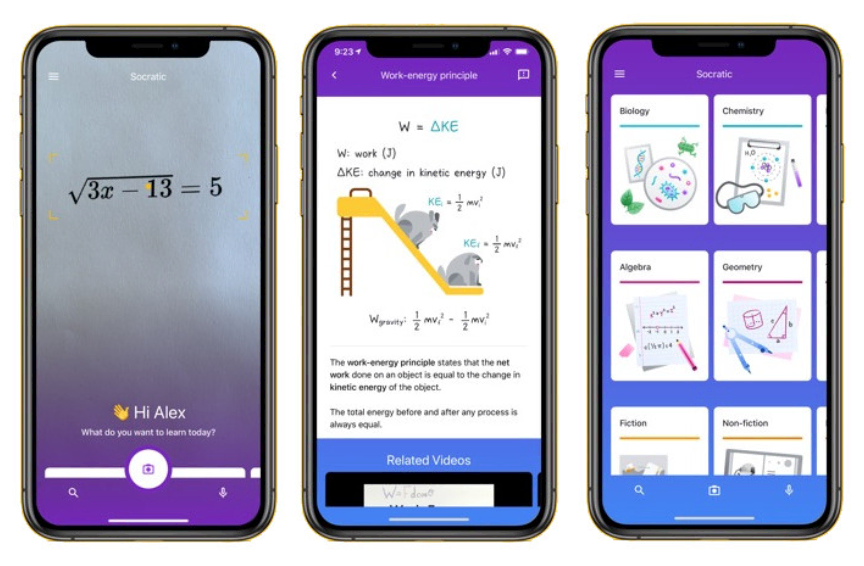 GSuite for Education
GSuite for Education
More than 90 million educators globally are using Google GSuite for Education and more than 40 million are using Google Classroom. Whilst many variables are behind this phenomenal success when I think back to why I first introduced this toolkit to a College it was because it enabled learning to be transformed and aligned to the digital age we are in, whilst also supporting work readiness where the ability to use cloud based technologies to build new collaborations is essential.
As Google CEO Sundar Pichai has said, technology itself doesn’t improve education but it can be a powerful part of the solution.
Colleges in the UK like Leeds City College and Coleg Cambria are examples of this and their insights and lessons learned are widely available through JISC case studies and wider articles.
Most importantly for me GSuite for Education empowers self directed but collaborative learning that not only enables focus through highly personalised learning experiences it also supports work readiness as it is now, not as it once was.
Kiosk mode on Chromebook

Devices like Chromebooks are perfect for staying focused. They can be put into kiosk mode limiting the ability to become distracted by looking at applications or websites not relevant to the purpose of the moment. The same function makes them perfect for examination machines.
Stay focused with StayFocusd
This application is a brilliant tool for imposing a discipline on how devices are used in terms of making specific websites available or not and for how long. Applications like this support productivity especially for those who sit down at a computer aiming to complete a piece of work within an hour and three hours later have actually checked Facebook, Twitter, bought a concert ticket and worked out which film to see at the cinema.

The research from Sylvester and Cho provides some interesting insights into how and why to structure learning in specific ways more tailored to how we learn.
It suggests that subjects dealing with precise responses are best suited to the morning when it is easier to maintain focus and to flip to more open learning that require less precision and sustained focus in the afternoon.
The same research of course doesn’t bode well for those taking exams in the afternoon as evidenced in the extensive analysis by the Danish National Centre for Social Research.
In his Forbes article ‘Forget the Facts, Teach Students How to Learn’ Chris Klundt highlights how personalisation and self directed learning are key emergent priorities for learning now, and technology can of course provide highly personalised learning to keep people engaged when used wisely.
Klundt argues that one of the most significant aspects of this is that learners are in greater control of the learning process and this is why the development of skills for learning is now more important than remembering facts.
Klundt shares the contention of Harvard University Professor Eric Mazur who created the Peer Instruction method seeing learning as a collaborative process with teachers are more like knowledge coaches than the source of facts. Of course collaboration that deepens understanding is a core part of the commercial business world also, so in preparing learners for the world of work this approach makes sense.
Never once in my business life have we faced a challenge where I have asked a colleague to hand over all technology we might use to find the answer efficiently, isolated them and given then two hours to solve it. So why are we putting young people through this irrational, inappropriate and highly damaging process?
For now if it’s the system we have to operate for a while we need to reimagine the learning journey to the point at which students take such assessments and at least in that way we can better align the learning process both to how we learn in the world as it is now and to give people the best experience for to make the most of the world around them.
I was recently asked at a conference whether given the pace of technology innovation there was a future for teachers in a digitally connected, AI enabled highly personalised world of learning. I reminded delegates of the quote from Google CEO Sundar Pichai who said that technology alone will not improve education but it can be a powerful part of the solution. I believe this to be absolutely true.
I reminded the educators present that as we reimagine education in the digital age it is the creative capacities of our educators in the application of the new tools at our disposal that will determine success, not least because whilst technology may have memory it has no imagination.
Innovation in education technology is opening up new opportunities for extremely personalised learning that engages in ways that amplifies knowledge acquisition and discovery, enabling differentiated learning styles in ways not previously possible. If we use these tools effectively we can transform learning outcomes and therefore life chances in unprecedented ways.
Just try to avoid exams at 3pm.
Jamie E Smith, Executive Chairman, C-Learning












Responses